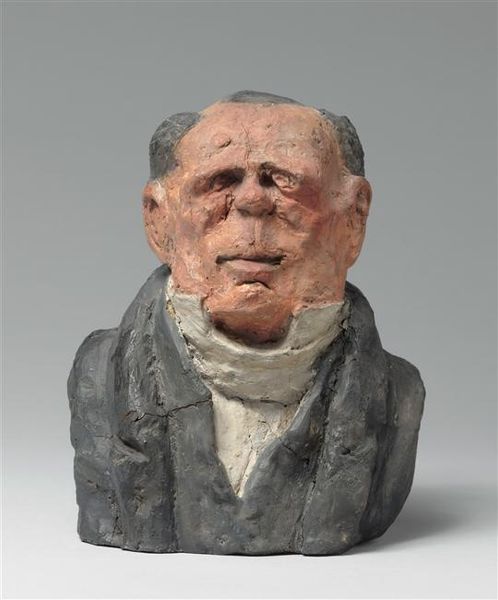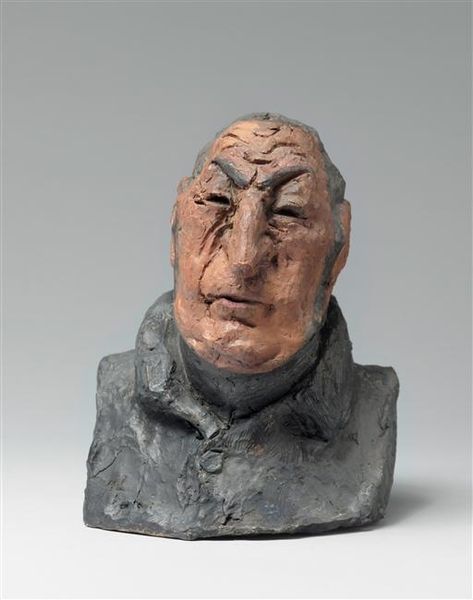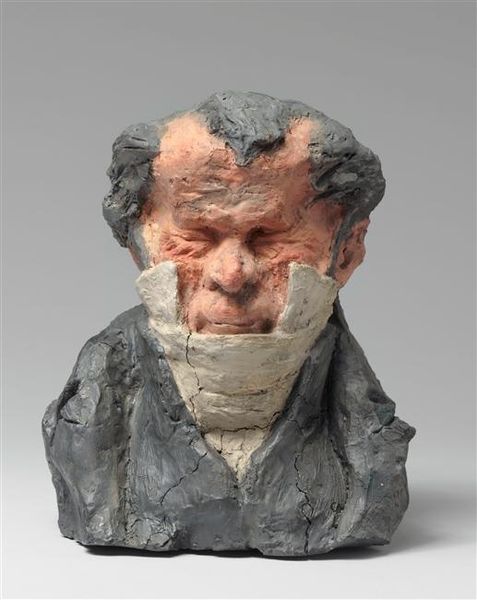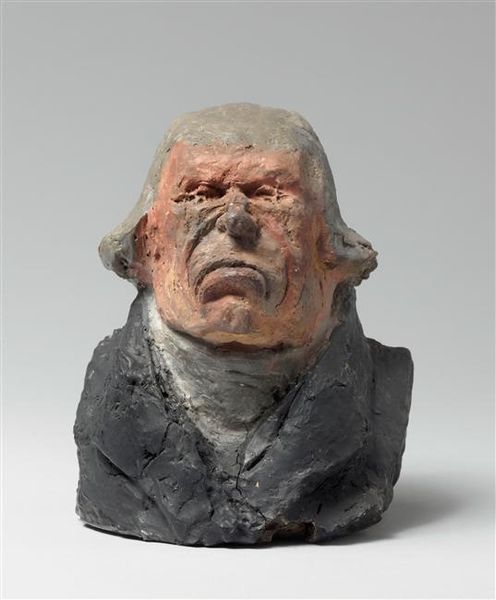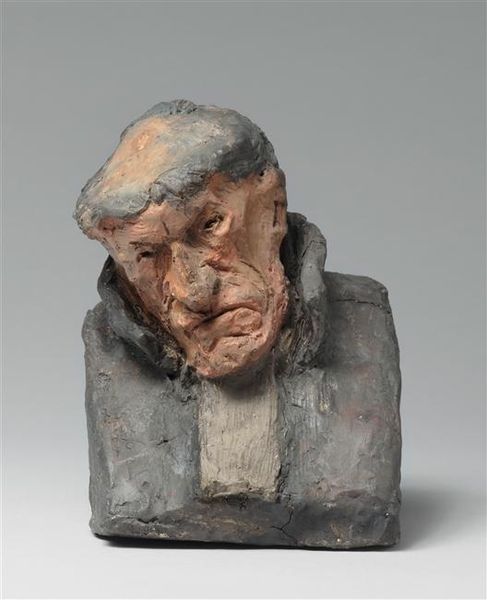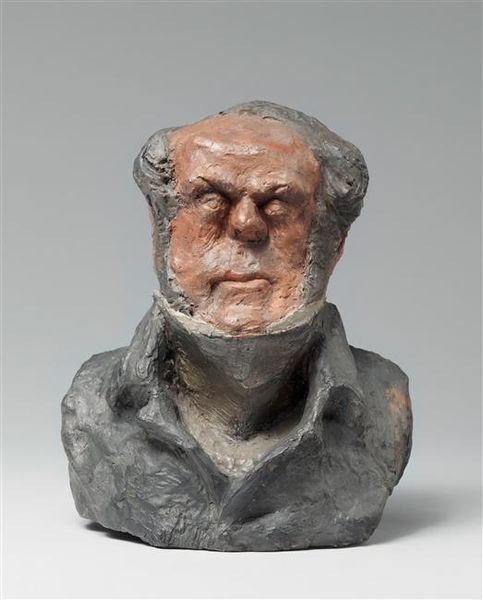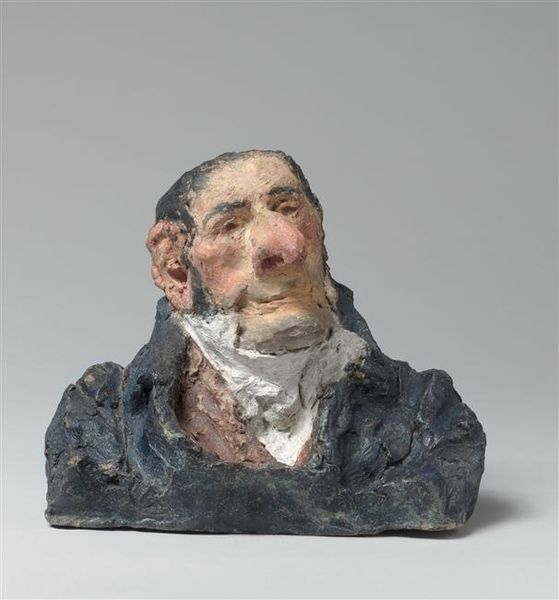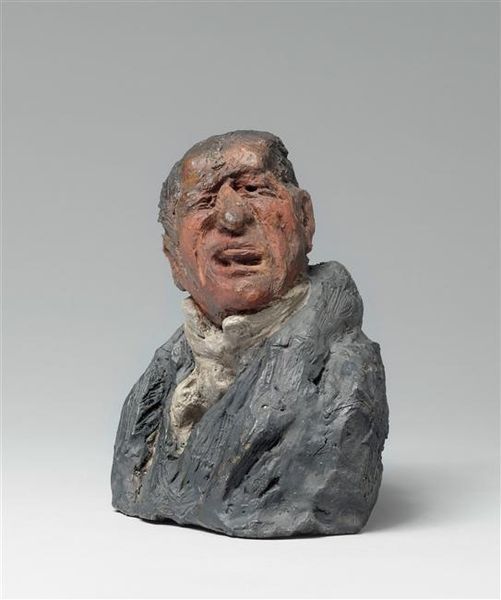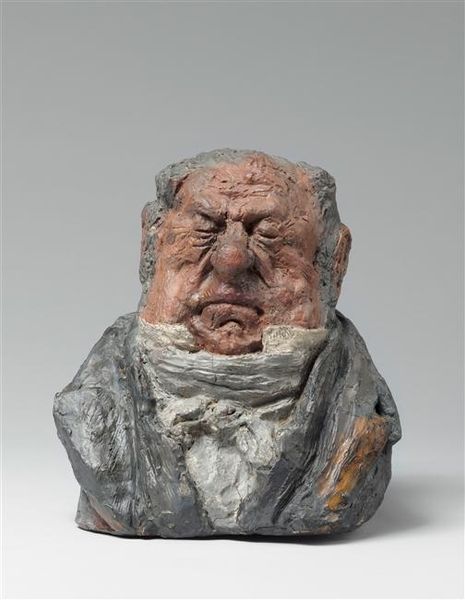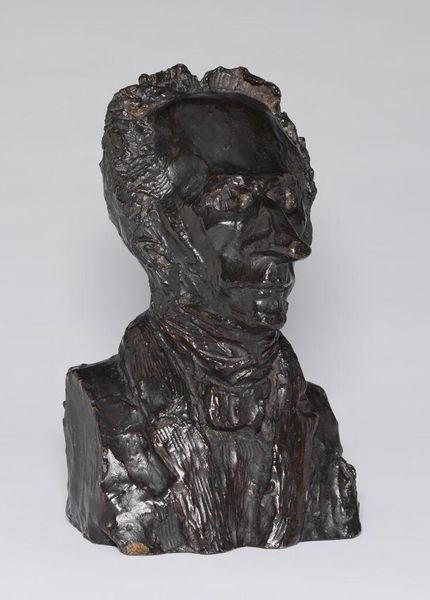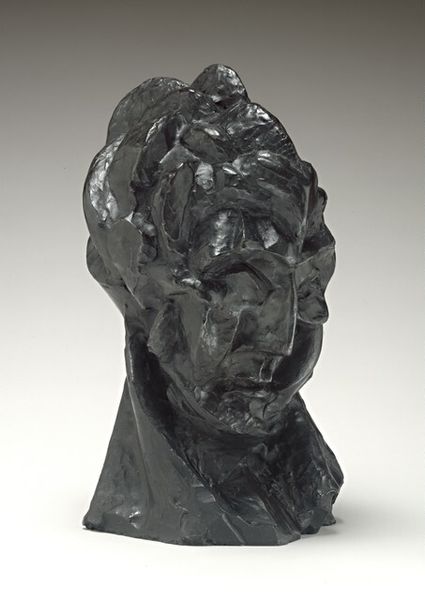
mixed-media, sculpture
#
portrait
#
mixed-media
#
sculpture
#
sculpture
#
realism
Copyright: Public domain
This is Honoré Daumier’s painted plaster sculpture of Augustus Ganneron, a French industrialist and member of parliament, created sometime in the 19th century. Daumier was working during the July Monarchy and the Second Republic, times of immense social and political upheaval in France. Daumier, known for his caricatures, sculpted a series of busts portraying members of the French Parliament, of which Ganneron was one. The artist captured not just physical likeness but the essence of the subject’s political role. In a society grappling with nascent capitalism and class tensions, Ganneron's identity as both an industrialist and a politician places him squarely in the center of these conflicts. What emotional narrative might Daumier be trying to create by presenting Ganneron with such a severe and unsympathetic gaze? Is this a commentary on the individual, or a more universal statement about the ruling class and its place in a changing world? The sculpture embodies the complex interplay between personal identity and political power during a transformative period in French history.
Comments
No comments
Be the first to comment and join the conversation on the ultimate creative platform.
